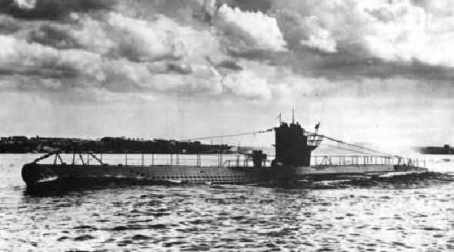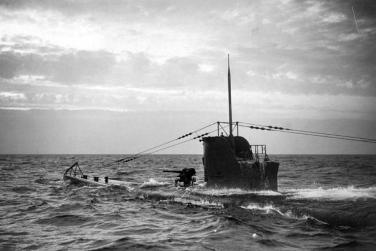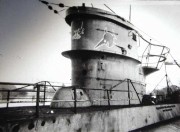|
Of all the weapons used in WWII, few are as feared and successful as the Type VII U-boat. With its sleek lines, and a seaworthy
design, the U-boat is still as legendary today as it was almost 70 years ago.
History of the Design:

|
| The U-100, an early Type VIIb U-boat |
As The Treaty of Versaille took into effect after The First World War, Germany was forbidden to manufacture submarines of
her own due to the disastrous damage the U-boats inflicted on the Allies during the conflict. However, through the establishing
of various dummy companies in parts of the Netherlands and Finland, German naval engineers were secretly able to experiment
with underwater designs that would prove lethal to the enemy in the war to come.

|
| The Iku-Turso, a Vetehinen class submarine. Resemblences to the Type VII can clearly be seen here |
Based upon the Finnish Vetehinen class of submarines and the successful UBIII class U-boats of the WWI, the German High
Command finally authorized the construction of a medium-sized, 500-ton U-boat initially known as the MVBVII design.
Soon after, seeing the great versatility and seaworthiness of the design, further sub-types were also ordered by the German
Navy by early 1935. By then, the project was officially recognized as the Type VII U-boat.
Specifications:
|
Name:
|
Type VII U-boat
|
|
Length:
|
64.5m - 67.2m (The hull was further extended to 76.9m and 77.6m for the VIID and VIIF variants respectively)
|
|
Beam:
|
5.8m - 7.3m (VIIF)
|
|
Draft:
|
4.4m - 5.0m
|
|
Displacement:
|
626 tons - 760 tons surfaced (with the exception of VIID-F models)
745 tons - 865 tons submerged (same exceptions as above)
|
|
Speed:
|
16 - 17 knots surfaced
7.6 - 8 knots submerged
|
|
Range:
|
4300 - 6500 nautical miles surfaced
90 nautical miles submerged (the VIIC variant had its range reduced to 80 mil submerged)
|
|
Propulsion:
|
Two 1400 bhp diesel engines (for surface use and recharging) coupled to two 375 bhp electric motors (for propulsion underwater)
|
|
Armament:
|
4 bow torpedo tubes
1 stern tube (mounted externally for the early VIIA variant)
|
|
Crew:
|
~44 men and officers
|
|

